During the last edition of the GAMERZ festival, i discovered the existence of the Copie Copains Club (Copy Companion Club), a community of artists who copy each other. To become a member of the club, you either copy a fellow artist or you are copied by them. It’s that easy!
Copie Copains Club aims to highlight the art of copying in the Post-Internet era. Today, the works and their representations circulating on the web become themselves available materials, ready to be replayed by other artists. At a time when production companies and governments toil to outlaw copying, CCC aims to be a space where everyone can freely enjoy the copying: a playground where contemporary artists or geeks designers of all generations and all countries can question their relation to intellectual property and their own creation.
Copie Copains Club is a cheerful, provocative project. More importantly, it offers the art community an informal space to discuss copyright, creativity, plagiarism, fair use of existing images and other issues that the art world has long been debating over but that internet culture has reinvigorated.
It is also interesting to note that the initiative comes from France, a country where copyright infringement laws are particularly stringent.
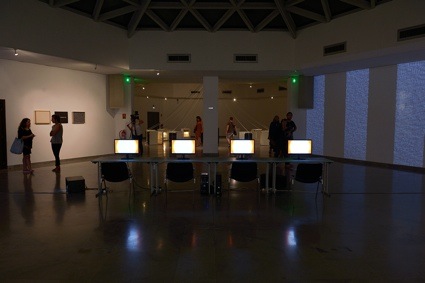 Photo Luce Moreau for GAMERZ
Photo Luce Moreau for GAMERZ
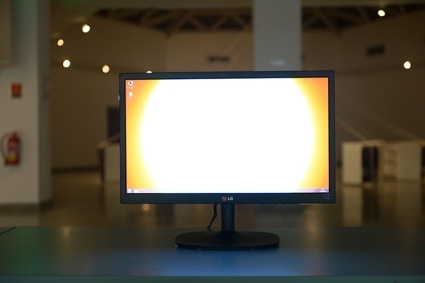 Joëlle Bitton, Weather Desktop Project. Photo Luce Moreau for GAMERZ
Joëlle Bitton, Weather Desktop Project. Photo Luce Moreau for GAMERZ
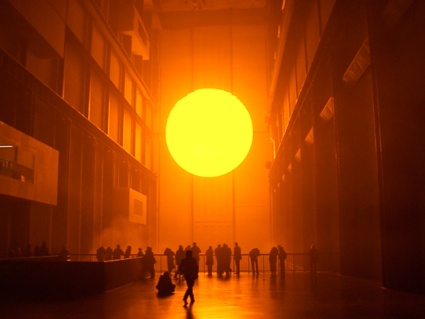 …. inspired by Olafur Eliasson’s The Weather Project
…. inspired by Olafur Eliasson’s The Weather Project
Copie Copains Club started as a platform and a licence but the experiment was given the opportunity to take on a physical presence when GAMERZ invited the artists behind CCC to curate an exhibition based on the works that follow the CCC rules. Some of the ‘copies’ merely put an humorous spin on the original, others added depth and an extra layer of reflection.
I talked to artists/curators Emilie Brout, Caroline Delieutraz & Maxime Marion about the CCC experience:
(The artists answered me in french. Just scroll down to read the original text.)
Hi, Caroline, Emilie and Maxime! I like the name Copie Copains Club. It’s cheerful and melodic. Why did you chose this name? What did you want to convey with it?
We wanted a meaningful, funny and that sounded good. The CCC is a club of friends who copy each other. Like the project, it is “cute” but also a bit provocative, in particular because it includes the term copy, even if we’re actually talking more about détournements, remixes and tributes. The acronym “CCC” is rich in references, and “CCC license” is a direct spin on the Creative Commons license.
Why did you start this project? I remember Maxime telling me in Aix-en-Provence about the situation of p2p exchange in France. So is there a political motivation behind the CCC?
There is of course a political motivation, especially in a country like France where the right to intellectual property is particularly strict. Add to that laws such as HADOPI and a long tradition in which the artist is both protected but also hindered in its practice. The artist is not necessarily a victim of the copy, it feeds on it. The CCC is intended to dramatize a little bit this issue, attacking the copyright idea collectively with a smile and some nice nuances. But we also wanted to create a playground, a space for exchange and dialogue that uses artworks as a go-between.
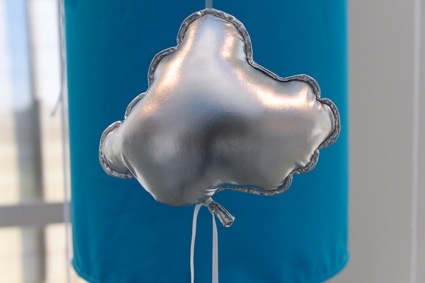 Djeff, Super Google Clouds. Photo Luce Moreau for GAMERZ
Djeff, Super Google Clouds. Photo Luce Moreau for GAMERZ
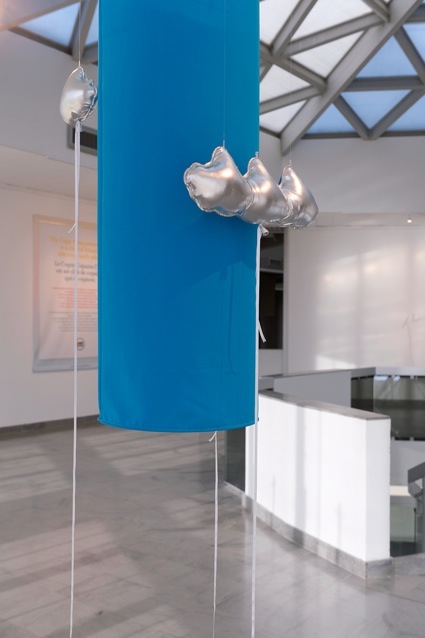 Djeff, Super Google Clouds. Photo Luce Moreau for GAMERZ
Djeff, Super Google Clouds. Photo Luce Moreau for GAMERZ
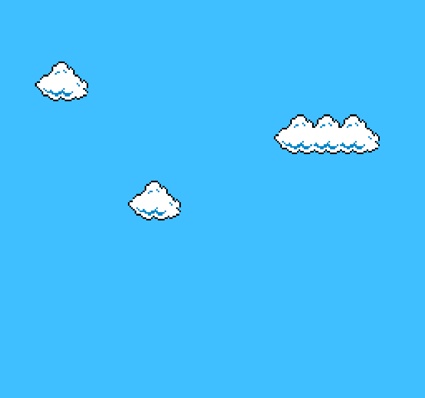 … inspired by Cory Arcangel’s Super Mario Clouds
… inspired by Cory Arcangel’s Super Mario Clouds
Many people like to repeat Picasso’s quote “Good artists copy, great artists steal.” Nonetheless, copying still has a bad rep’ in society of course but also in the art world. Why do you think there is still a lot of stigma in art against copying?
Copying in creation is a very old question, and it is surprising to see that it is still raised in a society where ownership and piracy are completely mainstream (who has never used one of the first images popping up on a Google search without even wondering where it came from?) What remains sensitive, is the personal relationship that each artist has with their creation, their own “originality”. Many artists are still afraid of being dispossessed, yet each work, inspired or not by another one, matters for the personality that the artist will inject into it. The CCC is also a place where you can show without any embarrassment works that look a bit too much like other works (whether they were produced before or after), a place where everyone and no one can be called a copycat.
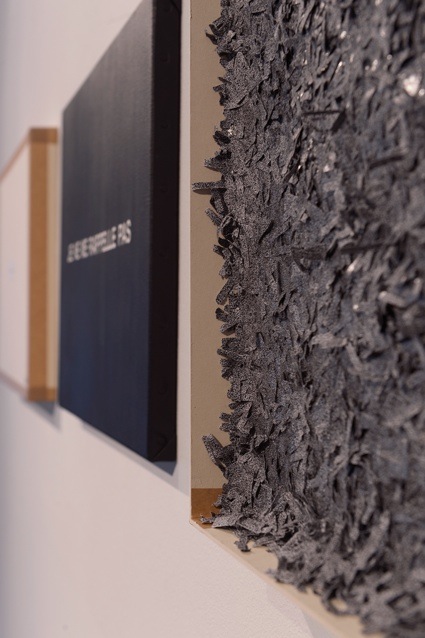 S. Aubry & S. Bourg, One shot date painting. Photo Luce Moreau for GAMERZ
S. Aubry & S. Bourg, One shot date painting. Photo Luce Moreau for GAMERZ
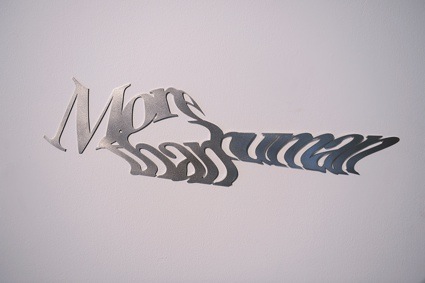 Arnaud Cohen, More Human Than Human. Photo Luce Moreau for GAMERZ
Arnaud Cohen, More Human Than Human. Photo Luce Moreau for GAMERZ
How was CCC received by artists whose work had been copied? Did they all feel flattered or did the copies create discontent? Did you find for example that artists who are used to working in tech/digital/new media contexts react differently from artists who are working with more ‘traditional’ media and ideas?
For an active member of the CCC, being copied is a great honor, it means that someone took the time to reflect on, study, question your work … The 4th rule of CCC requires you to notify the original author of the fact that they have been copied with a message like this: “Hello, you have been copied with such project, unless you specify otherwise you are now a member of the club and are now free to copy whoever you want”. This friendly approach may explain why there has ultimately never been any problem nor removal request. Regardless of age or discipline, the project was generally well received, even by the most recognized artists. And if there is no reaction, we assume that “Silence is consent.” This is what the club advocates: we first copy, then we inform, which is subtly different from the standard practice.
How is the CCC database growing? Do you get regular submissions?
Everyone is free to participate and join the club as long as they follow the rules of the manifesto. Such as copying only living artists (Rule 2), or to copy a “buddy” if this is a first copy (Rule 1). The buddy list (nearly a hundred to date) continues to grow steadily. The more the merrier :)
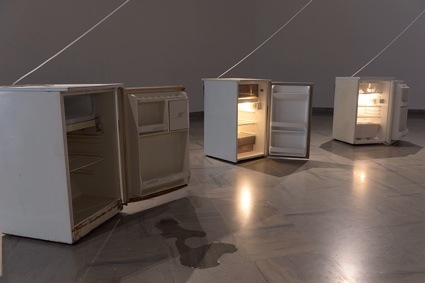 Grégoire Lauvin, Brrrr! Photo Luce Moreau for GAMERZ
Grégoire Lauvin, Brrrr! Photo Luce Moreau for GAMERZ
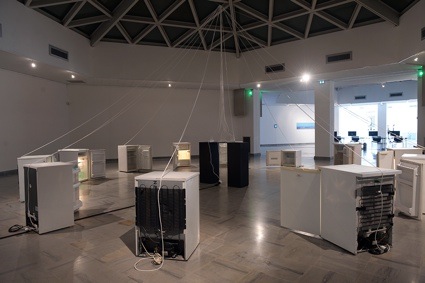 Grégoire Lauvin, Brrrr! Photo Luce Moreau for GAMERZ
Grégoire Lauvin, Brrrr! Photo Luce Moreau for GAMERZ
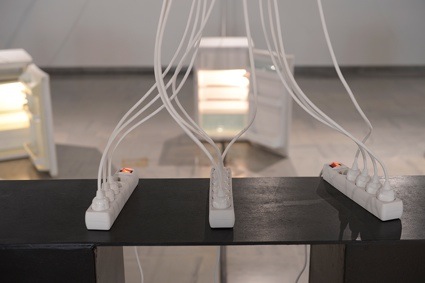 Grégoire Lauvin, Brrrr! Photo Luce Moreau for GAMERZ
Grégoire Lauvin, Brrrr! Photo Luce Moreau for GAMERZ
CCC ‘got physical’ for the last edition of the GAMERZ festival in Aix-en-Provence. How did you select the artists who were exhibited? Did you commission some works or did you only chose from the works already available on the CCC database?
Artists and projects were selected directly from the website, but some were still at the idea stage. For example, Brrrr! by Gregory Lauvin existed only in the form of sketches, and the Gamerz exhibited made it possible to produce it. As this was the first physical CCC exhibition, we selected pieces which references were easily recognizable, this facilitated the reading of the overall project.
However, each of these copies had their own relationship to the original work, have very different approaches: distant reference, resonance between personal experience and the one of the referent artist, purely formal détournement, criticism, etc. We were also pleased with the way the works became autonomous, conversed with each other and raised new issues, such as the relationship between “real” and “virtual”, transhumanism …
And do you otherwise work with the notion of copy culture in your own practice?
The concept of appropriation is fully integrated within our respective practices, so that this is not even a claim or a militant act as was the case for artists of previous generations (Sherry Levine, Christian Marclay, etc.) This is a medium like any other, and it happens to be ours. So we very often use the media produced by other people, we focus on their history, on the why and how they were produced, the people they were intended to reach, the paths they traveled and the way to reassemble them in order to produce new forms. This has naturally led us to reflect on issues related to intellectual property.
Thanks Caroline, Emilie and Maxime!
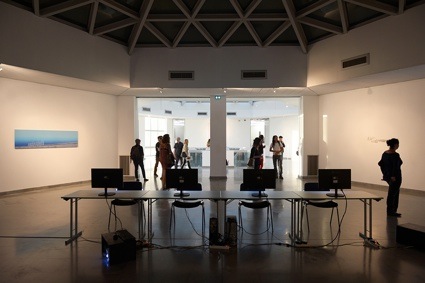 Photo Luce Moreau for GAMERZ
Photo Luce Moreau for GAMERZ
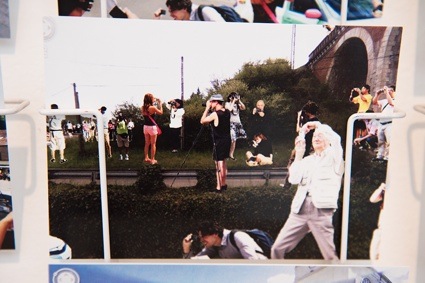 Annabelle Ameline, Où est Raymond? Photo Luce Moreau for GAMERZ
Annabelle Ameline, Où est Raymond? Photo Luce Moreau for GAMERZ
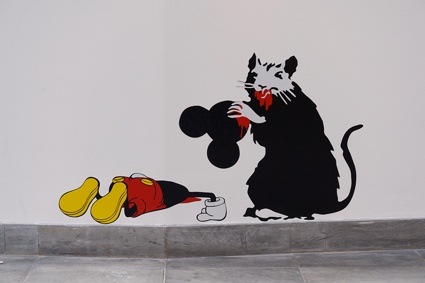 Emmanuel Laflamme, Survival of the Fittest. Photo Luce Moreau for GAMERZ
Emmanuel Laflamme, Survival of the Fittest. Photo Luce Moreau for GAMERZ
Réponses en français:
I like the name Copie Copains Club. It’s cheerful and melodic. Why did you chose this name? What did you want to convey with it?
Nous voulions un nom explicite, drôle et qui sonnait bien. Le CCC est un club de copains qui se copient. A l’image du projet, il est “mignon” mais un brin provocateur notamment par l’utilisation du terme copie, même s’il s’agit en réalité plus de détournements, de remixes ou d’hommages. L’acronyme “CCC” est riche en références, et la “licence CCC” est une variation directe de la licence Creative Commons.
Why did you start this project? I remember Maxime telling me in Aix-en-Provence about the situation of p2p exchange in France. So is there a political motivation behind the CCC?
Il y a bien sûr une motivation politique, notamment en France où le droit à la propriété intellectuelle est particulièrement lourd, en plus de lois telles que Hadopi et d’une longue tradition où l’artiste est à la fois protégé mais aussi entravé dans sa pratique. L’artiste n’est pas forcément une victime de la copie, il s’en nourrit, le CCC a pour but de dédramatiser un peu cette question, en attaquant l’idée de copyright collectivement, avec le sourire et de jolis dégradés. Mais nous avions aussi envie de créer un terrain de jeu, un espace d’échange et de dialogue par oeuvres interposées.
Many people like to repeat Picasso’s quote “Good artists copy, great artists steal. ” Nonetheless, copying still has a bad rep’ in society of course but also in the art world. Why do you think there is still a lot of stigma in art against copying?
La copie dans la création est une question très ancienne, et il est étonnant de voir qu’elle est encore sensible dans une société où l’appropriation et le piratage sont complètement banalisés (qui n’a pas déjà utilisé l’une des premières images renvoyées par Google sans se demander d’où elle provenait ?). Ce qui reste sensible, c’est le rapport personnel que chaque artiste entretient avec sa création, sa propre “originalité”. De nombreux artistes craignent ainsi encore de se faire déposséder, or chaque oeuvre, inspirée ou non d’une autre, compte surtout pour la personnalité que l’artiste va y injecter. Le CCC est donc aussi un lieu où l’on peut montrer sans gêne des oeuvres qui ressemblent un peu trop à d’autres (qu’elles aient été produites avant ou après), un lieu où tout le monde et personne ne peut être traité de copieur.
How was CCC received by artists whose work had been copied? Did they all feel flattered or did the copies create discontent? Did you find for example that artists who are used to working in tech/digital/new media contexts react differently from artists who are working with more ‘traditional’ media and ideas?
Pour un membre actif du CCC, être copié est un grand honneur, cela signifie que quelqu’un a pris du temps pour se pencher sur son travail, l’étudier, le questionner… La règle 4 du CCC impose de notifier l’auteur original du fait qu’il ait été copié, avec un message du type : “Bonjour, vous avez été copié avec tel projet, et sauf mention contraire de votre part vous êtes à présent membre du club et êtes libre de copier qui vous souhaitez à votre tour”. Cette approche sympathique explique peut-être qu’il n’y ait finalement jamais eu le moindre problème ni aucune demande de retrait. Indifféremment de l’âge ou de la discipline, le projet est généralement bien reçu, même par les artistes les plus reconnus. Et s’il n’y aucune réaction, nous partons du principe que “qui ne dit mot consent”. C’est ce que revendique le Club : on copie d’abord, on informe ensuite, ce qui est subtilement différent de la pratique courante.
How is the CCC database growing? Do you get regular submissions?
Chacun est libre de participer et de devenir membre du club tant qu’il respecte les règles du manifeste, comme le fait de ne copier que des artistes vivants (règle 2), ou de copier forcément un “copain” s’il s’agit d’une première copie (règle 1). La liste de copains (près d’une centaine à ce jour) continue de s’allonger régulièrement. Plus on est de fous plus on rit :)
CCC ‘got physical’ for the last edition of the GAMERZ festival in Aix-en-Provence. How did you select the artists who were exhibited? Did you commission some works or did you only chose from the works already available on the CCC database?
Les artistes et projets ont été directement sélectionnés sur le site, mais certains n’étaient alors qu’à l’état d’idée. Brrrr! de Grégoire Lauvin par exemple existait uniquement sous forme de croquis, et l’exposition soutenue par le festival Gamerz a permis de la produire. Comme il s’agissait de la première exposition physique du CCC, nous avons choisi des pièces dont la référence était assez reconnaissable, pour faciliter la lecture du projet global. Mais ces copies, ayant toutes un rapport différent à leur original, présentent des approches très variées : référence lointaine, résonance entre son expérience personnelle et celle de l’artiste référent, détournement purement formel, critique, etc. Nous avons également été ravis de la manière dont les oeuvres, alors devenues autonomes, dialoguaient entre elles et soulevaient de nouvelles problématiques, telles que le rapport entre “réel” et “virtuel”, le transhumanisme…
And do you otherwise work with the notion of copy culture in your own practice?
L’appropriation est une notion complètement intégrée dans nos pratiques respectives, si bien qu’il ne s’agit même plus d’un acte revendiqué ou militant comme cela pouvait l’être pour des artistes des générations précédentes (Sherry Levine, Christian Marclay…) : c’est un médium comme un autre, simplement c’est le nôtre. Nous avons donc recours extrêmement souvent à l’emploi de médias produits par d’autres personnes, en nous intéressant à leur histoire, pourquoi et comment ils ont été produits, à qui ils sont destinés, quels chemins ils parcourent et comment les réassembler pour produire de nouvelles formes. Nous avons donc été naturellement amenés à réfléchir aux questions liées à la propriété intellectuelle.
Merci Caroline, Emilie et Maxime!
Previously: The 10th edition of GAMERZ. From dancing trash bag to dichotomic perception + Hold On, when a joystick manipulates Hollywood.
